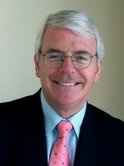Below is the text of the speech made by John Major, the then Parliamentary Under-Secretary of State for Health and Social Security, in the House of Commons on 15 January 1986.
I beg to move,
That the draft Statutory Sick Pay Up-rating Order 1985, which was laid before this House on 17th December, be approved.
The purpose of the order is to increase the rates of statutory sick pay and the bands of earnings which determine the rate payable. My right hon. Friend the Secretary of State has carried out his annual review of those amounts as he is required to do by the Social Security and Housing Benefits Acts 1982. The uprating of the bands, and consequently the rates, is reviewed in relation to changes in the general level of prices which, in the 12 months to October 1985, rose by 5–4 per cent. as measured by the index of retail prices. The draft order accordingly provides for an equivalent increase in the SSP rates and earnings levels to apply from 6 April 1986.
As hon. Members will know, there are three rates of SSP. As usual, in working out the new rates we have followed established practice and rounded them to the nearest 5p. The new upper and middle thresholds have been rounded down to the next 50p. Rounding down in that fashion is beneficial to employees as it enables more to qualify for the higher and middle rates of SSP than would otherwise be the case. The lower earnings threshold—below which no SSP is payable—is not subject to uprating by the order. That is set automatically by the Act at the lower earnings limit for class 1 contributions, which will be £38 from 6 April 1986.
The result of these calculations is that from next April employees with average earnings of £74·50 or more per week will qualify for SSP at the new standard weekly rate of £46·75. Those who earn between £55·50 and £74·49 will be entitled to the new middle rate of £39·20. And those who earn between £38 and £55·49 will receive the new lower rate of £31·60. These new rates represent increases of £2·40, £2 and £1·60 per week respectively.
The draft order makes the usual transitional provision for those employees who have current entitlement to SSP at the time the uprating takes effect. Whichever level of SSP an employee is receiving at the time the uprating takes place, whether standard, middle or lower, he will, from 6 April receive the new amount of SSP relevant to that level for as long as his period of entitlement lasts. This is so even if his average earnings—which are, of course, calculated at the start of his sickness—would put him in a different earnings band. Without this beneficial provision some employees could face a significant reduction in the SSP payable to them at the uprating date and I am sure hon. Members will welcome the fact that this will not occur. [HON. MEMBERS: “Hear, hear.”] I acknowledge support from whatever quarter it comes.
April 1986, will, of course, see other changes in SSP that lie outside the main provisions of the order. The House will recall that under legislation passed in the Social Security Act 1985, an employer’s maximum liability for paying his employees SSP when sick will increase from eight weeks to 28 weeks. Full reimbursement of the costs of this extended period will continue to be available with employers deducting their costs from their national insurance liability. Some other changes in the present rules and procedures will also take place consequent on the increased maximum duration. These were developed following consultation and discussion with employers and others earlier last year. I am pleased to say that a completely revised employer’s guide to statutory sick pay, incorporating these changes, was issued to all employers last October to enable them to make the necessary preparation for these changes. The new rates covered in the order before us will thus be the first ones to apply to the extended scheme.
It remains the Government’s intention to review SSP rates and earnings bands annually, with increases taking effect from the following April. By 1987 social security benefits will also have moved to an April uprating date, We intend, therefore, that in future the Secretary of State will review SSP rates at the same time as other social security benefit rates.
Details of the new SSP rates and earnings bands will be notified to employers shortly in a leaflet issued with the new national insurance contribution rate tables, which will also come into operation in April. The new SSP rates will also be publicised in leaflets available generally from the Department of Health and Social Security.
Finally, I should perhaps remind the House that the rates of SSP are statutory minima. Many employees—in fact, the great majority—receive occupational sick pay from their employers and a number continue to get full pay when sick. We have no evidence to suggest that the current rates of SSP have resulted in hardship or difficulties for employees. Indeed there are clear indications that most employees prefer SSP to the sickness benefit it replaces because it is so much simpler for them to receive their money when sick from the same source as when working. Neither is there evidence to suggest that the rates have affected employers’ and employees’ flexibility for negotiating levels of occupational sick pay.
The draft order provides for the SSP rates to keep pace with the rise in the general level of prices. I commend it to the House.
